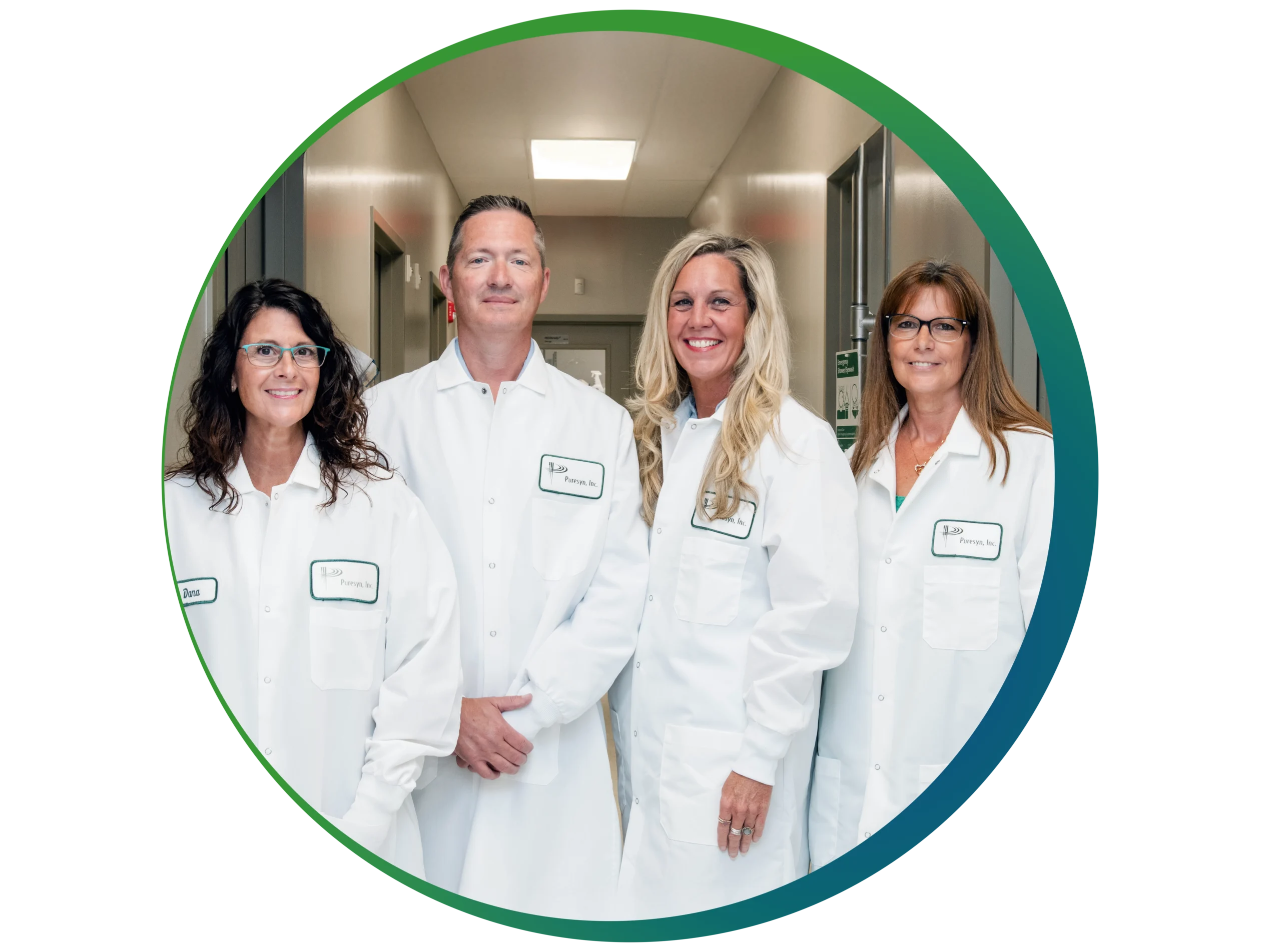Biopharmaceutical applications
How Puresyn plasmid DNA contributes to cell and gene therapy research and development
At Puresyn, we collaborate with leading researchers to produce high-purity plasmid DNA that supports therapeutic advancements and makes a real impact on lives. Let’s take a look at some of the ways Puresyn’s plasmid DNA contributes to biopharmaceutical development.
What is plasmid DNA?
In plants, animals, fungi and other eukaryotes, DNA is organized into long chromosomal strands. In bacteria and other prokaryotes, however, DNA molecules are circular and are stored only in the cell cytoplasm — rather than the nucleus.
“Plasmid DNA” specifically refers to the DNA molecules in the bacterial cytoplasm — as opposed to the primary chromosomal DNA. Also simply called pDNA or “plasmids,” these small extrachromosomal DNA cells provide additional genetic traits to the bacteria, such as antibiotic resistance.
For biopharma scientists, pDNA is a uniquely versatile tool and the critical starting material for a whole host of applications.
5 reasons why plasmid DNA is useful in cell and gene therapy
Taken together, these factors make plasmid DNA a highly efficient, versatile and stable tool for delivering engineered genetic material, with applications from discovery through the clinical phase.
Plasmids are especially valuable for producing viral vectors and mRNA, the basis of two innovative approaches in gene therapy and other applications.
Plasmid DNA in
adeno-associated virus (AAV)
and lentivirus (LV) applications
Gene therapies, vaccines and cancer treatments often use genetically modified, non-harmful viruses as vectors for delivering therapeutic genetic material into host cells.
Adeno-associated virus (AAV) and lentivirus (LV) are two commonly used viruses, which can be engineered into vectors through the use of plasmids. Scientists encode the gene of interest (GOI) into the plasmid, which is then introduced to the virus used to carry the genetic material into the host cells.
Plasmid DNA in
messenger RNA (mRNA)
applications
Within a human cell, messenger RNA encodes the production of specific proteins and peptides. This function can be engineered to optimize vaccines and other immunotherapies, treatments for genetic disorders, and more.
Plasmid DNA is often used for in-vitro transcription (IVT), which is a lab technique that synthesizes desired RNA sequences using complementary DNA as a template.
Challenges of using plasmid DNA in biopharma and gene therapy applications
In Gram-negative bacteria, the outer membrane of the cell wall is mostly made up of endotoxins, which provide both structure and protection to the bacterial cell. Most bacterial endotoxins are lipopolysaccharides (LPS), and the two terms are often used interchangeably. These are large complex molecules made of a lipid, a carbohydrate polymer (oligosaccharide), and a polysaccharide.
During the lysis stage of plasmid DNA production, the bacterial cell wall is destroyed — releasing endotoxins. Unless the endotoxins are removed, they can interfere with cell cultures, reduce transfection efficiency and trigger strong immune responses. This is why stringent endotoxin screening is essential in biopharma applications to ensure endotoxin-free plasmid DNA.
Plasmids vary in the number of copies that can exist in a cell. This “plasmid copy number” (PCN) can range from low (1-10) to high (more than 20). So, using a plasmid with a low PCN will naturally produce lower yields than using one with a high PCN.
Large genetic inserts can reduce PCN, while certain sequences may be tough to maintain or impair bacterial cell growth.
Finally, larger plasmid size means more metabolic stress on the host cell. This may also reduce PCNs and inhibit cell growth.
Exceptional pDNA quality and service for any application
Regardless of application, you can count on Puresyn’s 30-plus-year history of plasmid DNA excellence. We have never wavered from our high standards or commitment to delivering pDNA products that meet or exceed established specifications and those of our collaborators.

Plasmid DNA market growth and future outlook
The global market for plasmid DNA manufacturing was an estimated $1.8B in 2023, with a 21.1% projected compound actual growth rate (CAGR) from 2024 to 2030. This growth is largely driven by the rising demand for genetic therapies and DNA vaccines, genetic engineering advancements, and growing biopharma applications.
The future of plasmid DNA manufacturing is particularly bright for cell and gene therapy applications, cancer treatment, infectious diseases and DNA vaccines.
Plasmid DNA Manufacturing Market Size, Share Report, 2030; Grand View Research.